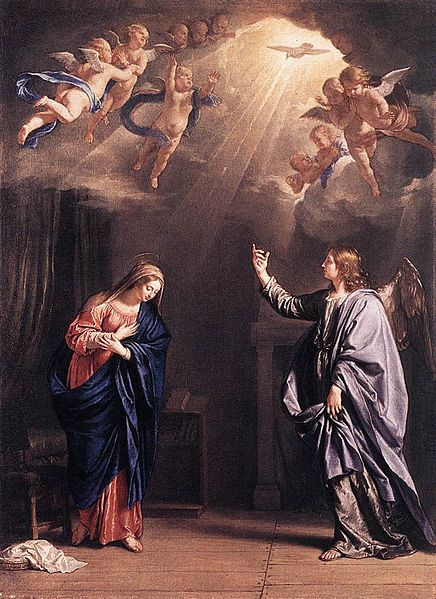Pneumatology refers to a particular discipline within Christian theology that focuses on the study of the Holy Spirit. The term is derived from the Greek word Pneuma, which designates "breath" or "spirit" and metaphorically describes a non-material being or influence. The English term pneumatology comes from two Greek words: πνεῦμα and λόγος. Pneumatology includes study of the person of the Holy Spirit, and the works of the Holy Spirit. This latter category also includes Christian teachings on new birth, spiritual gifts (charismata), Spirit-baptism, sanctification, the inspiration of prophets, and the indwelling of the Holy Trinity. Different Christian denominations have different theological approaches on various pneumatological questions.
Symbolic representation of the Holy Spirit as a dove, from medieval Monastery of Žiča
Holy Spirit in Christianity
For the majority of Christian denominations, the Holy Spirit, or Holy Ghost, is believed to be the third Person of the Trinity, a triune God manifested as God the Father, God the Son, and God the Holy Spirit, each being God. Nontrinitarian Christians, who reject the doctrine of the Trinity, differ significantly from mainstream Christianity in their beliefs about the Holy Spirit. In Christian theology, pneumatology is the study of the Holy Spirit. Due to Christianity's historical relationship with Judaism, theologians often identify the Holy Spirit with the concept of the Ruach Hakodesh in Jewish scripture, on the theory that Jesus was expanding upon these Jewish concepts. Similar names, and ideas, include the Ruach Elohim, Ruach YHWH, and the Ruach Hakodesh. In the New Testament the Holy Spirit is identified with the Spirit of Christ, the Spirit of Truth, and the Paraclete (helper).

The Holy Spirit as a dove in the Heavenly Trinity, joined to the Holy Family through the Incarnation of the Son, in The Heavenly and Earthly Trinities by Murillo, c. 1677 [clarification needed]
The Holy Spirit as a dove in The Annunciation, by Philippe de Champaigne, 1644
Stained glass representation of the Holy Spirit as a dove, c. 1660
In the Farewell Discourse Jesus promised to send the Holy Spirit to his disciples after his departure; depiction from the Maesta by Duccio, 1308–1311.





